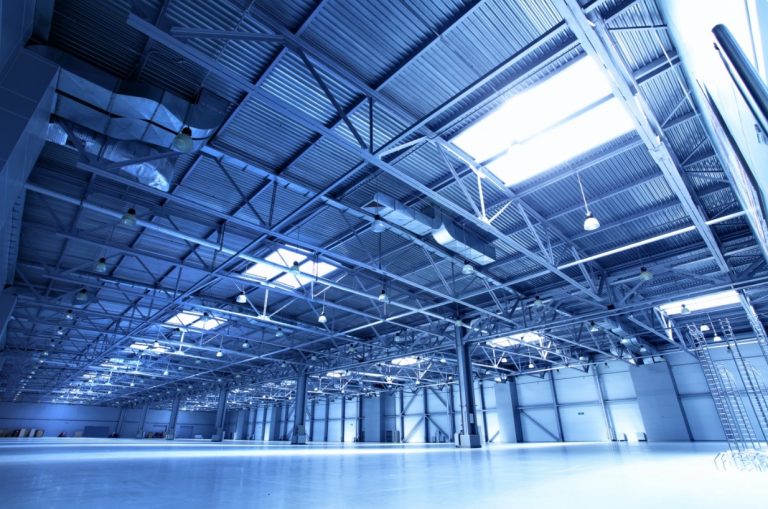As the name suggests, high bay lights are designed for areas that have high ceilings. Any space with ceilings higher than 20 feet is likely to need high bay lighting. Larger spaces provide more area and thus need more illumination to adequately light the space. High bay lights usually rate at 150 watts or greater to supply the needed intensity to fill larger spaces.
Perhaps more important than the wattage of the lights you choose, is the lumens required for adequate illumination. You can calculate lux (the measure of light intensity in a given area) for a space, but a good rule of thumb is to aim for 2 lumens per square foot. A warehouse ( space 20 feet high, for example, usually needs 16,000-20,000 lumens for adequate lighting, while a 25-35 foot ceiling needs something closer to 33,000 lumens.
You will also want to consider the use of the space as you lay out your lighting plan. Retail spaces, because they need to provide brighter illumination to accent products and to create a welcoming atmosphere for customers, should aim for 800 lux as a minimum. Warehouse spaces, on the other hand, can get by with 500 lux. Storage spaces generally only require about 300 lux.
Finally, you’ll need to calculate the number of lighting fixtures and the types you will need for your space. The higher the space, the more distance you can allow between fixtures. For a 30 foot ceiling, spacing of 20 feet provides sufficient lighting. For a 20 foot ceiling spacing of fixtures must be reduced to 15 feet for bright illumination. Keep in mind that you will want to consider cross-over lighting as part of your design. Light should come from three directions for proper illumination. A last consideration is the style of fixture you will need. Round fixtures have become increasingly popular because of the ease of their installation, but traditional rectangular fixtures work well in spaces with aisles.
Why Choose LED
Using LED lighting for your high bay needs offers a number of benefits over metal halide, fluorescent, or other traditional forms of lighting. Metal halide lights have become a popular choice for high bay lighting, but they take a long time to warm up and tend to vary in color and lose luminosity over time. LED lights, on the other hand, start quickly, maintain color, and tend to only very slowly degrade. In comparison to fluorescent lighting, LEDs do not contain toxic chemicals and do not flicker the way older fluorescents do. Other advantages of LED lighting include:
- Cost efficiency: LED high bay fixtures range from 95 watts to 495 watts while more traditional fixtures use up to 1,000 watts. Using LED lighting can thus save you from 40%-60% in energy costs. Additionally, because LED lights slowly degrade over time, their lifespan is longer than traditional lighting. The cost of maintaining LEDs in comparison to traditional lights can save thousands of dollars.
- Safety: LED lights do not emit UV rays nor do they use mercury so they are a much safer choice. Because they last longer and are easier to install, LED lights also lessen the likelihood of worker injury during maintenance. LED lights also do not emit heat, which not only means a safer environment, but also lowers cooling bills.
- Performance: LED lights provide more lumens than traditional lighting, so you can brightly illuminate a space for less money. Because of their multi-point design, LEDs also distribute light more evenly over surfaces, even in the areas that fall between fixtures. Finally, you can choose from a variety of colors to provide the quality of brightness you desire for your project.
The Right Choice
As you work on your next high bay project remember that LED light fixtures provide high quality illumination while offering energy efficiency, fast start times, and lower costs. That’s savings you can pass on to your customer.


0 Comments